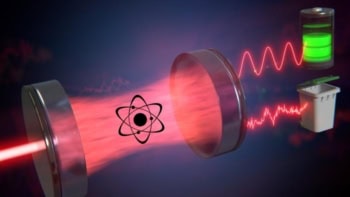Extreme acts of terrorism could be more common than we think according to two research students at the University of New Mexico in the US. Aaron Clauset and Maxwell Young have found that the frequency and severity of terrorist attacks - defined as the number of deaths plus the number of injuries - are related by a power law. The results suggest that we could witness another act of terrorism comparable with that on September 11, 2001 within seven years (arXiv.org/abs/physics/0502014).

Clauset and Young analysed a database that contains details of more than 19,900 terrorist events that occurred in 187 countries between 1968 and 2004. According to the database, which is maintained by the National Memorial Institute for the Prevention of Terrorism (MIPT), at least one person was killed or injured in some 7,088 of these events.
The New Mexico pair found that the probability of an event with a severity of x or higher was proportional to x-α, where the scaling parameter α has a value close to two (see figure). Moreover, they showed that the distributions did not fit other “heavy-tailed” distributions like a log-normal curve. According to Clauset and Young, the results show that extreme events like September 11 are not “outliers” but part of the overall pattern of terrorist attacks that is “scale invariant”.
“Unfortunately, the implications of the scale invariance are almost all negative,” Clauset and Young told PhysicsWeb. “For example, because the scaling parameter is less than two, the size of the largest terrorist attack to date will only grow with time. If we assume that the scaling relationship and the frequency of events do not change in the future, we can expect to see another attack at least as severe as September 11 within the next seven years.” Clauset and Young also suggest that the behaviour they observe is an extension of the still unexplained scale invariance between the frequency and intensity of wars.
“I have to say I was quite skeptical at first, if only because so many power laws one sees reported are nothing of the kind – or rather, they might be, but the evidence just isn’t there,” says Cosma Shalizi, a physicist at the University of Michigan who helped Clauset with the work. “The usual methods that physicists employ to fit power-law distributions to data are quite unreliable, but Clauset and Young used reliable estimation methods. Personally, I would be a little more cautious than they are about claiming the distribution is scale-invariant, if only because the range and size of the data set is comparatively small, but this is definitely very careful and important work, and deserves to be taken quite seriously.”



